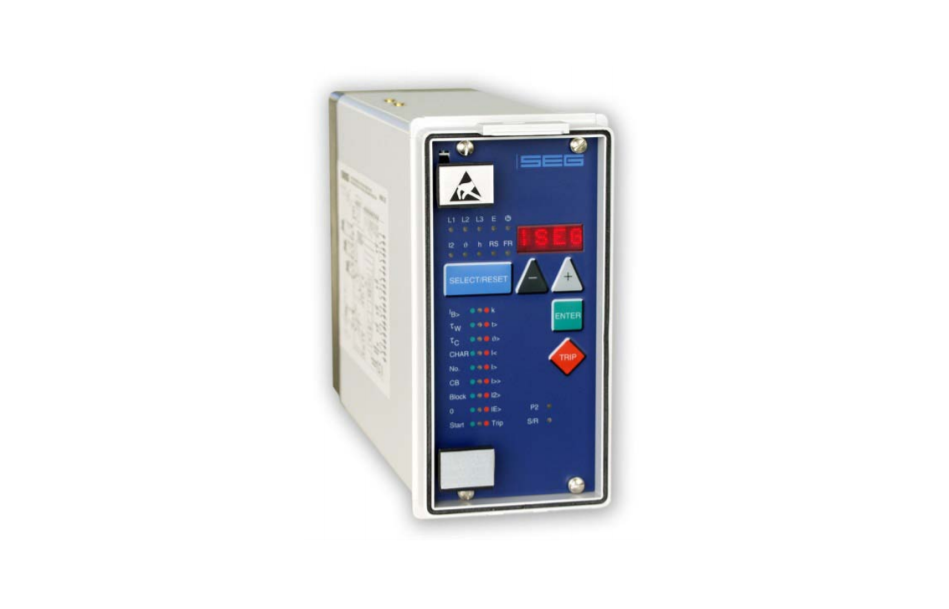Şebeke ayrıştırma rölesi MRN3-3, özellikle rüzgar parklarında bulunacak özel koşullar altında kullanılmak üzere tasarlanmıştır. Güç üreten sistemler şebeke kodlarına uyacaksa, yani şebeke arızası durumunda şebekeden hemen ayrılmayacaklarsa, ancak onu destekleyeceklerse, bunun yerine MRN3-3 en uygun röle olacaktır. İşlevi, şebeke voltajını ve şebeke frekansını şebeke kodlarına, şebeke bağlantı kurallarına ve operatör yönergelerine uygun olarak denetlemektir. Bu nedenle kısa mesafe veya uzun mesafe hataları arasındaki ayrım temel bir gerçektir. E-şebeke bağlantı kurallarının gerekliliklerine göre (sürüm gg. 20.08.03) ve “Yüksek ve maksimum gerilim sistemlerinde EEG enerji üretim tesisleri” VDN kılavuzu, standart koruma fonksiyonlarına ek olarak, MRN3-3, kısa mesafe ve uzun mesafe hatalarını ayırt etmek için gerekli olan voltaj süresi özelliklerini sağlar. Şebeke arızalarındaki normal voltaj çökme şekilleri, sistemlerin yalnızca çalışma için kesinlikle gerekli olduğu yerlerde seçici olarak bağlantısının kesilmesine izin veren bu özelliklerle dikkate alınır. Bir arıza durumunda, sistemler şebekeye daha uzun bir süre bağlanacaksa, şebeke voltajını destekleyecek ve böylece birbirine bağlı şebekenin birincil kontrol rezervi tarafından artık telafi edilemeyen geniş alan arızalarından kaçınacaklardır. İki bağımsız özelliğin varlığı sayesinde, her biri hatanın türüne göre kısa süreli veya kalıcı kesinti arasında ayrım yapmak mümkündür. Bir arıza durumunda, arıza sırası bir osiloskop tarafından kaydedilebilir. Bu hata senaryosunda, hat özelliklerine sahip MRN3-3, koruma tekniğinde ilk kez uygulanmıştır - kuralların gerektirdiği şekilde ızgara durumunun doğru tanımlanması ve analizi için çok faydalıdır.
FEATURES & FUNCTIONALITY
Şebeke ayrıştırma rölesi MRN3-3, özellikle rüzgar parklarında bulunacak özel koşullar altında kullanılmak üzere tasarlanmıştır. Güç üreten sistemler şebeke kodlarına uyacaksa, yani şebeke arızası durumunda şebekeden hemen ayrılmayacaklarsa, ancak onu destekleyeceklerse, bunun yerine MRN3-3 en uygun röle olacaktır. İşlevi, şebeke voltajını ve şebeke frekansını şebeke kodlarına, şebeke bağlantı kurallarına ve operatör yönergelerine uygun olarak denetlemektir. Bu nedenle kısa mesafe veya uzun mesafe hataları arasındaki ayrım temel bir gerçektir. E-şebeke bağlantı kurallarının gerekliliklerine göre (sürüm gg. 20.08.03) ve “Yüksek ve maksimum gerilim sistemlerinde EEG enerji üretim tesisleri” VDN kılavuzu, standart koruma fonksiyonlarına ek olarak, MRN3-3, kısa mesafe ve uzun mesafe hatalarını ayırt etmek için gerekli olan voltaj süresi özelliklerini sağlar. Şebeke arızalarındaki normal voltaj çökme şekilleri, sistemlerin yalnızca çalışma için kesinlikle gerekli olduğu yerlerde seçici olarak bağlantısının kesilmesine izin veren bu özelliklerle dikkate alınır. Bir arıza durumunda, sistemler şebekeye daha uzun bir süre bağlanacaksa, şebeke voltajını destekleyecek ve böylece birbirine bağlı şebekenin birincil kontrol rezervi tarafından artık telafi edilemeyen geniş alan arızalarından kaçınacaklardır. İki bağımsız özelliğin varlığı sayesinde, her biri hatanın türüne göre kısa süreli veya kalıcı kesinti arasında ayrım yapmak mümkündür. Bir arıza durumunda, arıza sırası bir osiloskop tarafından kaydedilebilir. Bu hata senaryosunda, hat özelliklerine sahip MRN3-3, koruma tekniğinde ilk kez uygulanmıştır - kuralların gerektirdiği şekilde ızgara durumunun doğru tanımlanması ve analizi için çok faydalıdır.


